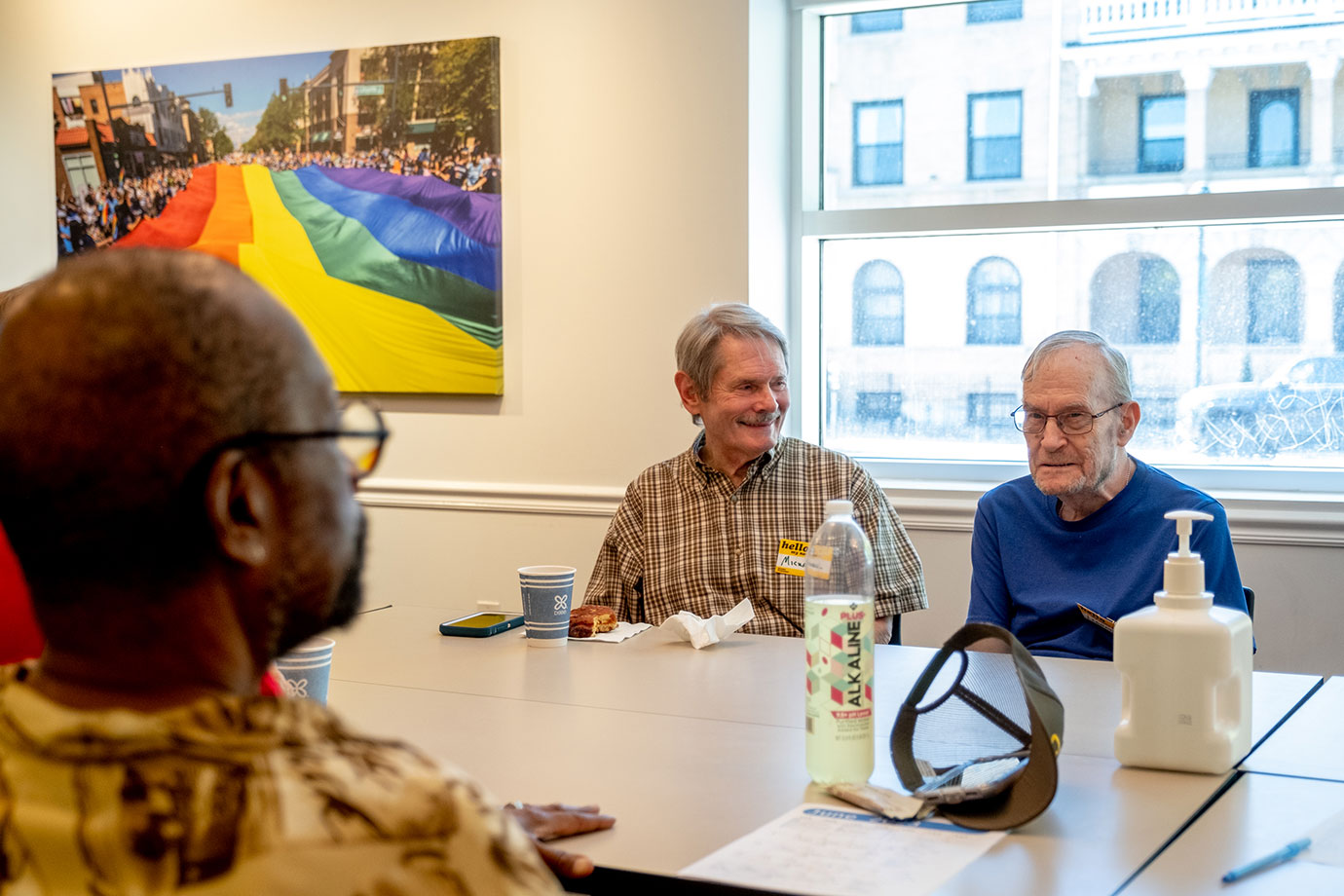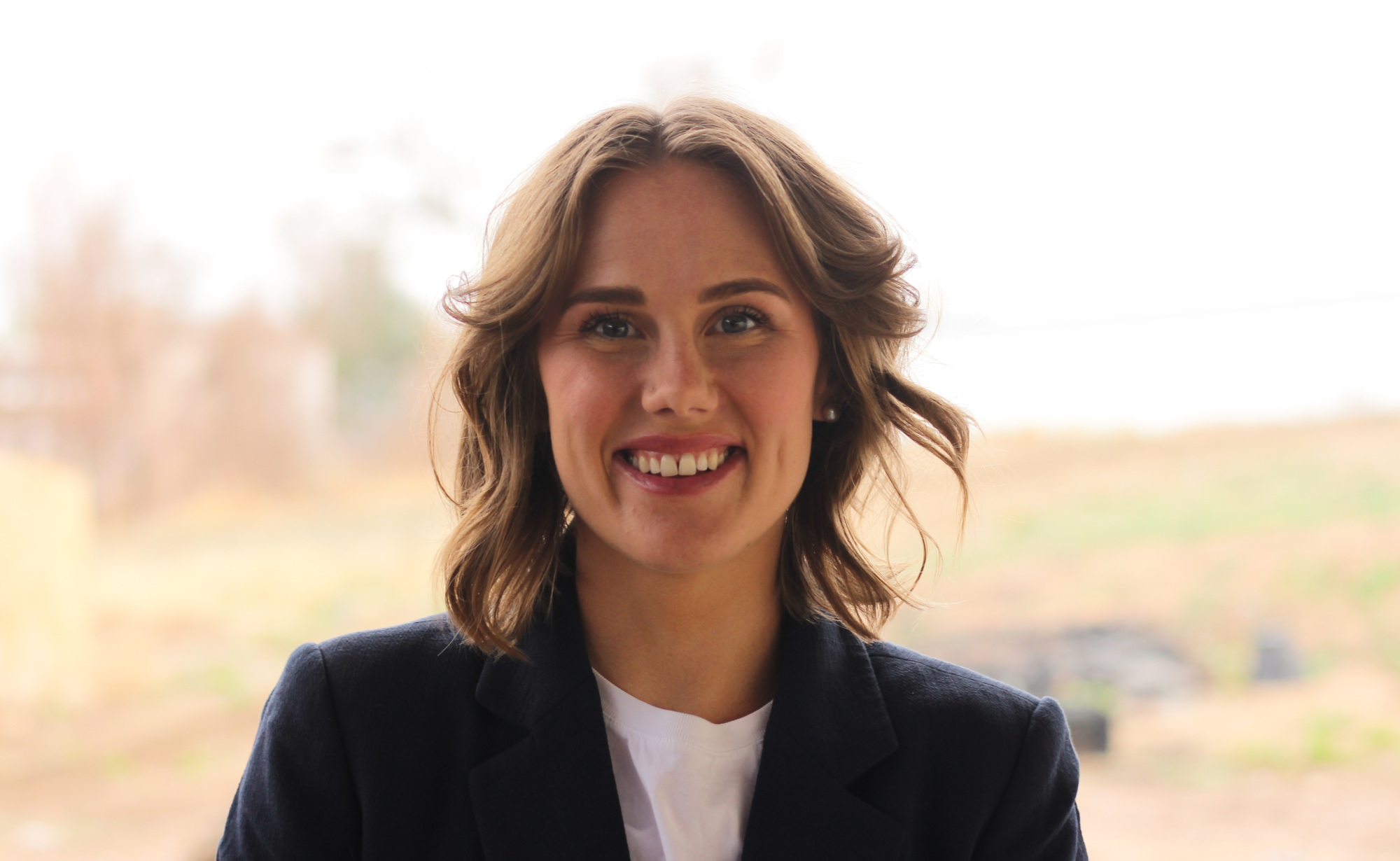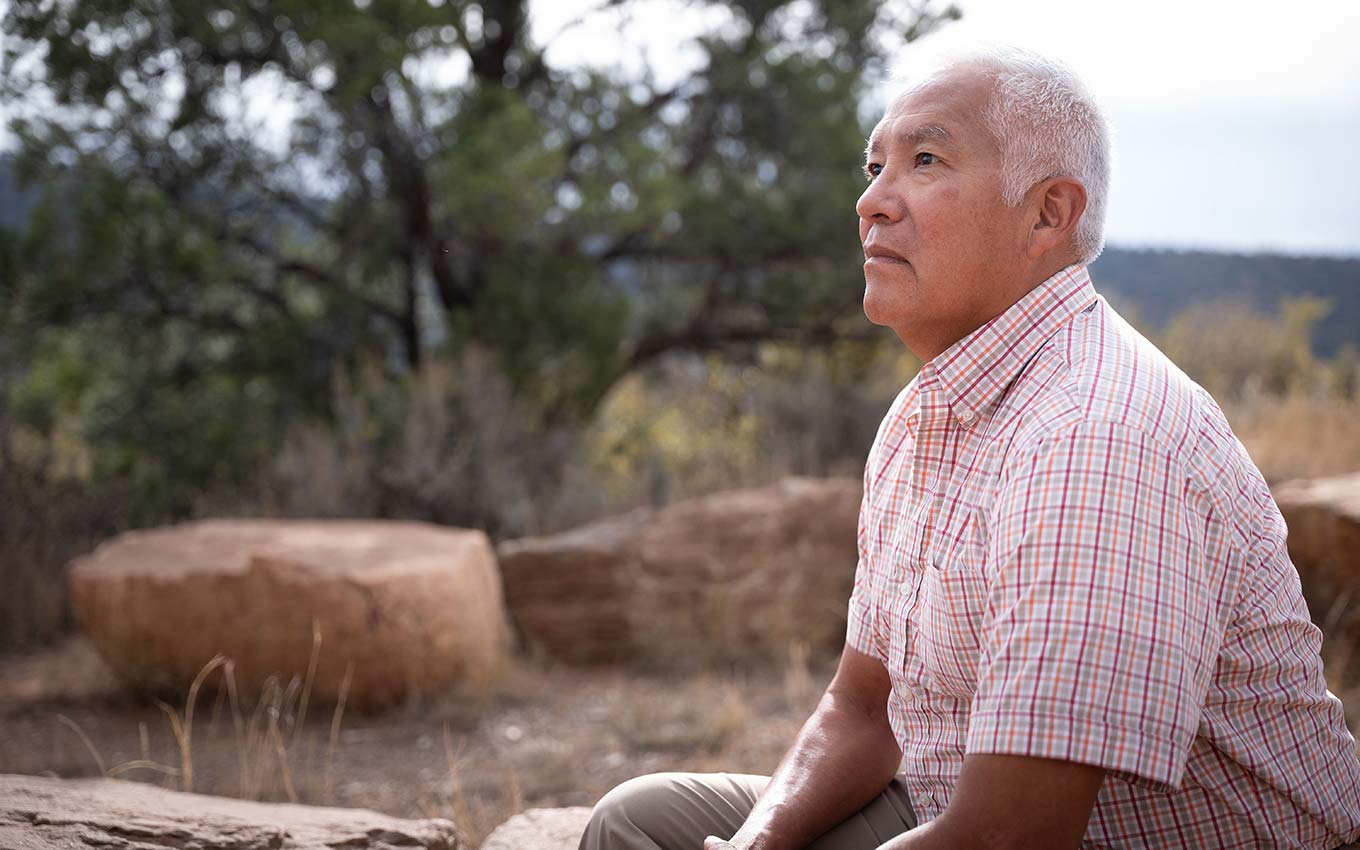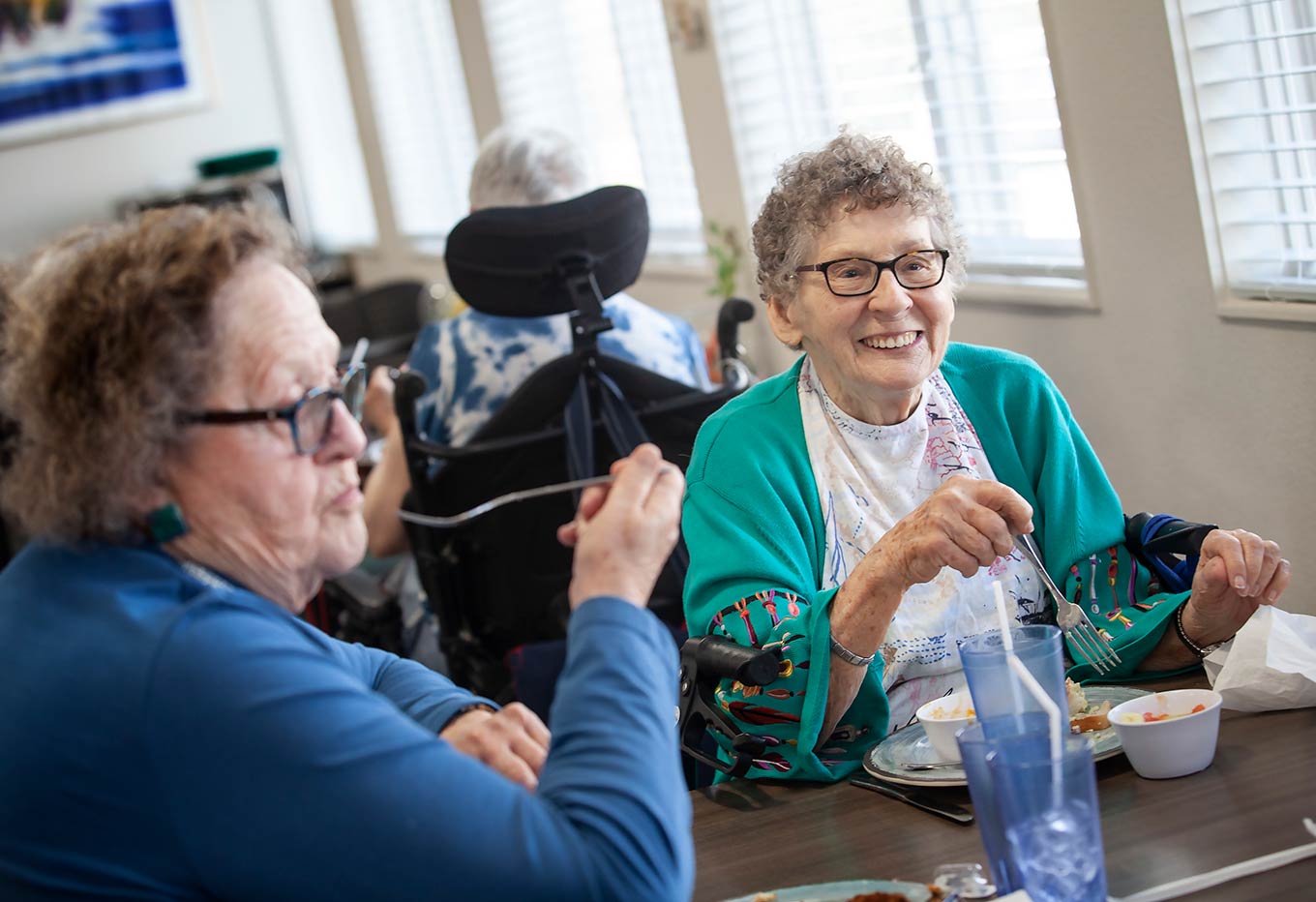On a sunny afternoon, Carolyn Campos and Naomi Bates are midway through a game of checkers. They’re sitting in Campos’ apartment at a facility in Aurora for people who are 62 and older.
They go back and forth, moving the magnetized pieces and commenting on the other person’s strategy. The pair are also fond of playing backgammon, the first game they played together.
“Of course, she let me win,” Bates said. “Our next venture is chess, but I don’t know if she’s going to be open to that.”
Campos shakes her head. She doesn’t like chess.
The two women often finish each other’s sentences. They have an easy friendship, as if they’ve known each other a long time. Yet in fact, they just met in March after they were connected through the Senior Companion Program, which is part of Spark the Change Colorado, a volunteer, service and civic engagement organization.
The program matches volunteers who are 55 years or better, as the program describes, with people who are also older than 55 and known as clients. The program is funded by AmeriCorps Seniors, a federal service agency, and aims to support the independence of older adults in their homes, and create friendships that allow people to “continue to be vibrant, contributing members of our communities.”
“There are a lot of people who would probably enjoy having somebody to hook up with, to create a friendship with and to come weekly to see you,” Campos said. “That would be awesome for a lot of people that live in this community.”
Loneliness and social isolation are increasingly being recognized as a nationwide epidemic. The U.S. Surgeon General’s office, headed by Vivek Murthy, MD, MBA, released an 81-page report earlier this year detailing the scourge of loneliness and social isolation, and also laid out a national strategy for addressing it, following recommendations from both national and global organizations.
Loneliness refers to the subjective experience that results from feeling isolated or having inadequate connections with others, while social isolation is objectively having few relationships, social roles or group memberships and infrequent social interaction. Nearly half of all adults in America reported experiencing loneliness in recent years—and that was before the COVID-19 pandemic cut off many people from their friends, loved ones and support systems.
“Both loneliness and isolation affect our health,” said Carla Perissinotto, MD, MHS, a geriatrician and professor of medicine at University of California, San Francisco. “That’s true even when we control for traditional medical risk factors.”
Loneliness is associated with a greater risk of cardiovascular disease, dementia, stroke, depression and premature death. It poses health risks as deadly as smoking up to 15 cigarettes a day and costs the health industry billions of dollars annually, according to the surgeon general’s report.
Last fall, Campos moved from Kentucky to Denver to be closer to her children and grandchildren. While she sees her family much more than she did when she was living in another state, she still wishes she could see them more.
Campos has limited mobility due to some health concerns, so she typically stays at home unless someone is able to provide transportation.
“I don’t get around that much, but I would love to meet more people in my complex. But it’s difficult,” she said. “Everywhere I go, I’m stuck to [my oxygen tank], so it’s difficult to get out.”
Campos and Bates meet every Monday and play games together or watch cooking shows. On one meetup, Bates brought Chinese food, a favorite of the pair.
For Bates, the volunteer opportunity is about more than just helping her clients (of which she has three); it’s also kept her from feeling isolated.
“It’s very fulfilling and rewarding. And plus, I’m retired, so I need to also fill up my time. Just don’t want to sit around doing nothing,” Bates said.
The growing concern over the impacts of loneliness and isolation has put a spotlight on the issue, and the pandemic helped place loneliness and isolation in the public discourse.
“Since the pandemic, we’ve all now felt what it feels to be homebound,” said Jillian Racoosin, executive director of the Foundation for Social Connection and the Coalition to End Social Isolation and Loneliness. “I hope that feeling for everyone brought more of an understanding to what our homebound seniors are experiencing day in and day out, and why it’s so important to invest in social support to make sure that we are taking care of those that are in the home.”
But even with more awareness and a decree from the U.S. government, there’s still a stigma associated with being lonely.
“I’ve had multiple people say, ‘I’m not lonely.’ But then you ask them, well, do you feel isolated? Do you feel left out? Do you lack companionship?” Perissinotto said. “They say, ‘Yes, all the time.’ And it’s like, well, that’s actually loneliness.”
Campos said she’s learned to manage being alone.
“I’ve just learned how to be by myself. And I enjoy it,” she said. “It gives me chances to do my Bible studies, and I enjoy watching the cooking show Chopped.”
Lonely older adults tend to have lower incomes, are less likely to be married, live alone and have poorer self-rated health and more physical limitations than their peers who don’t report being lonely, according to Project UnLonely, a program of The Foundation for Art & Healing.
People of color are more likely to be lonely. About three in four Hispanic adults are classified as lonely and nearly 70% of Black/African American adults are lonely—both are at least 10 points higher than what is seen among the total population, according to research from health company The Cigna Group.
More data is needed to understand loneliness among other groups, such as LGBTQIA+ older adults, who are twice as likely to live alone and often lack family support, according to a report from the National Academies of Sciences, Engineering, and Medicine.
Across town at Dayspring Villa, a senior living facility, Michael Van Dalsem and Leonard Aube, who were matched through the Senior Companion Program, meet up twice a week—once to attend the Men’s Coffee Group at The Center on Colfax, a community center for LGBTQIA+ Coloradans, and once just to visit.
Aube, who is 83 years old, doesn’t have any family in Colorado. He visits some of the people where he lives, but is dependent on Van Dalsem for rides to The Center on Colfax or to go to Safeway. He can’t travel on his own due to health complications.
“It reminds me that I have something valuable with my time, and that’s important to know that you are valued in some way,” said Van Dalsem. “I enjoy the people. We are good friends.”
“Best friends,” Aube chimed in.
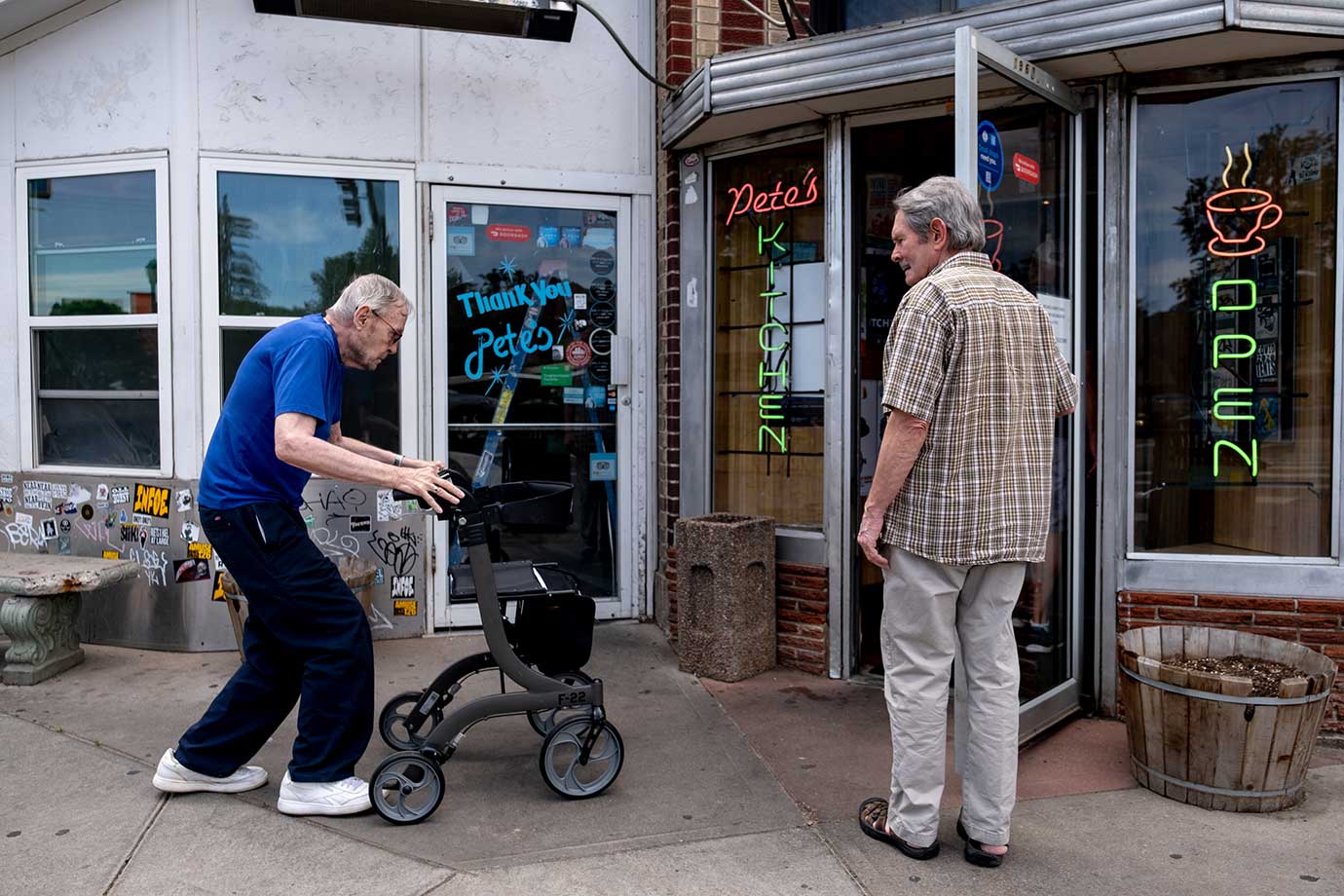
Van Dalsem holds the door open for Aube as they head into Pete’s Kitchen in Denver for lunch on May 30.
“He’s kind of brought me out of my shell,” Van Dalsem added. “He demanded that I talk.” Van Dalsem has one other client who he takes to doctor’s appointments that the client otherwise would have to get to by public transportation.
The Senior Companion Program has become a vital resource for older adults across the country, and its results are documented in studies that look at similar interventions.
“What we found is that for people who participated in this peer intervention for one year, which means you were paired with someone with a similar lived experience, we saw reductions in loneliness, depression and anxiety,” Perissinotto said.
But larger system changes are needed. The Surgeon General’s advisory laid out a framework to create a national strategy based on six pillars: strengthen social infrastructure, enact pro-connection public policies, mobilize the health sector, reform digital environments, deepen knowledge and cultivate a culture of connection. Yet while there’s a lot of evidence on the negative impacts of isolation and loneliness, there’s less evidence on solutions.
“What we don’t have a lot of evidence on is what works in practice, what works for different segments of the population, and how can we scale these innovative solutions?” said Racoosin. “A lot of our efforts now are really focused on that translation piece and supporting organizations, corporations and others to think through how we can not only deploy solutions, but then evaluate them.”
Perissinotto and a colleague, Julianne Holt‑Lunstad, PhD, a professor of psychology and neuroscience at Brigham Young University, published a paper in the New England Journal of Medicine earlier this year calling attention to loneliness and social isolation and the role of health care professionals—even with limitations like insufficient time and policies—in identifying and treating these challenges.
“Assessing for [social isolation and loneliness] periodically and including it in health records would allow clinicians to monitor it over time and adjust their responses as patients’ needs and circumstances change. … Patients’ lives may hang in the balance,” the paper reads.
Older adults are often thought of as more likely to be lonely, but according to the Surgeon General’s report, young adults are nearly twice as likely to be lonely than older adults. 79% of adults aged 18 to 24 report feeling lonely compared to 41% of those aged 66 and older.
Intergenerational connection is one way advocates have identified to lessen loneliness and social isolation, especially since over the last century, the U.S. has become age-segregated, making relationships between unrelated younger and older adults nearly unheard of.
To bridge that gap, Confidence Omenai and Haley Sanner founded Collective Healing Through Art, which brings younger and older adults together to create art and heal trauma. The organization set out to “disrupt the harm that was occurring to BIPOC and Queer youth and older adults in their Denver community.” Currently, Collective Healing Through Art is working with young adults from Big Brothers Big Sisters of Colorado and older adults from a few neighborhoods in Denver.
“We have a specific curriculum, and it allows them to build a bond together and to share at will, as they’re creating, what their experience has been,” said Omenai. “We watch them form bonds and become friends and become family.”
Earlier this year, Collective Healing became a program of LinkAGES, which works with various organizations in metro Denver to make intergenerational programming the norm. LinkAGES helps build capacity, facilitate collaborations and raise awareness of the power of intergenerational connections.
The programming LinkAGES organizes goes beyond just getting people of a different generation in a room together. It’s all about intention, said Rachel Cohen, executive director of LinkAGES.
“When we say intentional, it means that we design programs specifically to facilitate a connection,” Cohen said. “And the programs are always multisession because relationships and connections take time. It takes time for people to open up, especially when you’re dealing with loneliness and social isolation.”
LinkAGES is continuing to grow and will start working with organizations outside of Denver to offer best practices and training.
With increased awareness, organizations that are centered on creating solutions, and a national strategy, there’s optimism for a less lonely and isolated future for everyone.
“I’m hopeful, but I hope it’s not something that’s fleeting—that it’s popular now and then people are going to forget about this and forget about older adults and forget about those that are isolated,” said Perissinotto. “I think there’s a lot of work still ahead.”

Men’s Coffee Group attendees meet up weekly for conversations and friendship.
This article was written with the support of a journalism fellowship from The Gerontological Society of America, The Journalists Network on Generations and The Commonwealth Fund.
